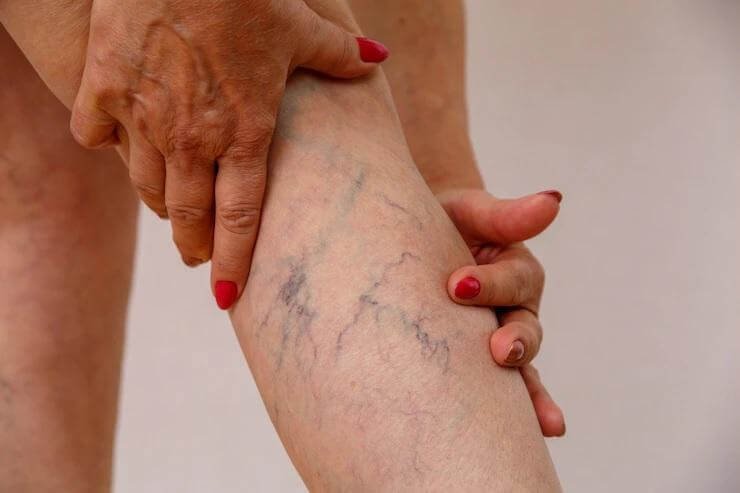Bulging, twisted veins known as varicose veins are often seen on the legs and lower extremities. Varicose veins and spider veins are more common in women than in men. As you become older and heavier, you’re more likely to suffer from varicose and spider veins during pregnancy. There is no risk to the patient’s health from varicose veins or spider veins.
Varicose Veins Symptoms
A twisted blue or purple vein will be visible just under the surface of your skin if you suffer from varicose veins. The following are some of the warning signs and symptoms:
- When they swell, huge, rope-like veins appear blue or purple. These lumps may be seen just below the skin’s surface on your thighs, calves, and foot.
- You may notice that your legs feel heavy or sluggish after a vigorous workout or session.
- Varicose veins might itch, so be aware of this.
- It’s possible that the back of your knees, in particular, are aching or hurting. Muscle cramps might be the cause of your discomfort.
- Swelling and throbbing in the legs, ankles, and feet are potential adverse effects.
Causes of Varicose Veins
As a result of the veins’ one-way valves, the blood can only flow in one direction. The valves may weaken if the vein walls expand and become less elastic.
Blood may leak backward and finally flow in the other way if a valve is weak. When this happens, blood may build up in the veins, causing them to swell and become more prominent.
Vein disease most often affects the furthest veins from the heart, such as those in the legs. Gravity makes it more difficult for the blood to return to the heart therefore this is the case.
Varicose veins may be caused by any condition that creates strain on the abdomen. The following are a few examples:
- pregnancy
- constipation
- tumors, in rare cases
Because of the weak blood flow, the skin doesn’t get the nutrients and waste it needs from the blood. This is known as chronic venous insufficiency.
What Is The Most Effective Method Of Treating Varicose?
When you’re standing up, your doctor will check your legs for signs of edema. In addition, your doctor may inquire about any pain or discomfort in your legs.
Treatment options for varicose veins include self-care techniques, compression stockings, and surgical or other procedures or treatments. Outpatient varicose vein operations are frequent, and most patients may return home the same day. It can also be treated with sclerotherapy .
When treating varicose veins, self-care techniques like regular exercise and elevating the legs when sitting or lying down may help alleviate symptoms and prevent them from worsening.
Conclusion
Varicose veins, which appear as dark, bulging veins on the legs, are common. Although these veins are generally safe, complications such as blood clots and bleeding may occur.
If you have varicose veins, elevating your legs and using compression stockings may help alleviate your discomfort. Injections, laser therapy, and surgery may be performed in more severe cases.

